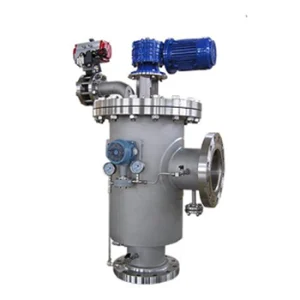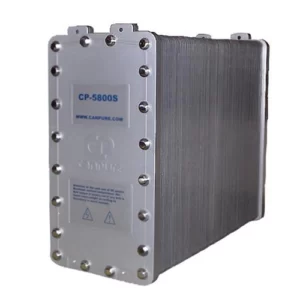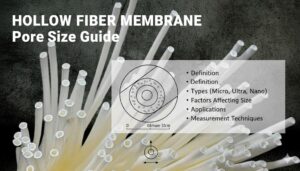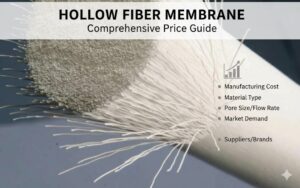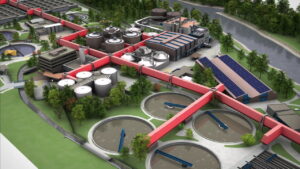Iron is one of the most abundant metals on Earth. But when it makes its way into water supplies, it can cause frustrating problems like rusty colored water, metallic tastes, and stubborn staining on fixtures and laundry. Luckily, water treatment for iron removal continues advancing with innovative methods that are more effective and easier to maintain than ever before.
In this comprehensive guide for 2025, as a professional water treatment supplier, I will share the latest technologies and tips for removing iron from well water, city water supplies, and other drinking water sources.

What Causes High Iron Levels in Water?
Before jumping into solutions, it helps to understand water treatment for iron removal starts with identifying root causes.
Iron contamination in water predominantly comes from two sources:
- Natural Environmental Causes – Water naturally flows through soil and rock layers, where it can dissolve iron or pick it up from iron bacteria. This forms “clear water” or ferrous iron.
- Corrosion of Pipes and Fittings – Over time, ageing galvanized steel pipes and older fittings made from iron begin corroding on the inside. This adds “red water” or ferric iron particles into the water supply.
While iron shows up more often in private well systems, many municipal water supplies also contain low background iron levels.
Problems typically start arising when concentrations exceed 0.3 mg/L. At levels over 1-3 mg/L, issues like staining, metallic taste, and rusty residue become much more noticeable and frustrating to deal with.
Key Considerations for Iron Removal Systems
When evaluating water treatment for iron removal methods, keep these key factors in mind:
Water Usage Rate
Pay attention to the daily volume of water your household or facility uses. High use applications call for more robust treatment systems that can keep up.
Level of Iron Contamination
Testing through an accredited lab reveals exactly how much iron needs removal – anything over 0.3 mg/L warrants treatment.
Well Depth and Environment
Does the well draw from an isolated aquifer or water-rich layer prone to high iron? Nearby soil conditions also provide clues for causes.
Other Water Quality Issues
Sometimes iron occurs alongside other problems like manganese or sulfur. Understanding all contaminants guides selection of effective solutions tailored to your unique water chemistry situation.
Overview of Iron Removal Techniques
There are three main treatment methods for removing iron from water:
1. Oxidizing Filters
These systems inject air or chemical oxidizers like chlorine, hydrogen peroxide, or potassium permanganate. This converts iron into solid particles that get trapped in filters.
2. Ion Exchange Water Softeners
Softeners swap hardness minerals for sodium ions. They also attract and remove small amounts of dissolved “clearwater” iron in the exchange process.
3. Alternative Iron Removal Media
Specialized filter media like manganese greensand, Birm, MTM, and Catalox form chemical bonds with iron particles. This allows substantial removal through a basic backwashing filter.
Now let’s explore these leading water treatment for iron removal techniques in more detail…
Oxidizing Filters: Converting Iron for Removal
Oxidizing filters provide one of the most thorough approaches for taking iron out of water.
They work by converting dissolved “clear water” ferrous iron into solid “red water” ferric oxide particles. This changes the iron into a filterable form that readily gets captured as water passes through.
Here’s an overview of common oxidizer options:
Chlorine Injection
Chlorine transforms iron for efficient filtration. It also disinfects bacteria. Requiring occasional media replacement and chlorine tank refills are downsides.
Hydrogen Peroxide
Highly effective even at low concentrations and easier on plumbing than chlorine. However, peroxide costs more and breaks down faster than chlorine.
Potassium Permanganate
This mineral salt generates better tasting water than chlorine injection methods. But it requires very precise control systems to work well.
Oxygen/Air Injection
Bubbles oxygen (from air) into the water for iron oxidation. Has minimal operation costs but slower reaction rates than chemical oxidizers.
Catalytic Media Filters
As water flows through special layers like Birm, Filox, Katalox Light or other catalysts, oxygen gets activated for iron removal without adding chemicals. Periodic backwashing cleans the media.
After iron changes forms through one of these oxidizing filters, a secondary filtration media captures particles, typically requiring backwashing every few days to prevent clogging.
Multi-tank systems properly control injection, oxidation, and filtration stages for iron removal. Costs range from about $2000 for chlorine tanks and filters up to $4000+ for complete hydrogen peroxide setups.
Using Water Softeners to Remove Iron
While designed mainly for hardness removal, ion exchange water softeners also attract ferrous iron molecules to their resin beads. This effectively reduces some dissolved iron during the softening process.
There are couple key factors determining whether a softener reliably removes iron:
- pH – Water needs a pH over 6.8 for iron to properly trade onto softener resin. Acidic water limits iron removal.
- Iron to Hardness Ratio – Softeners only remove iron at very low ratios relative to hardness minerals – no higher than 0.5 ppm iron per grain of hardness.
While softeners don’t officially “filter” iron, they provide an economical option if parameters fit within those limits.
For households with combined hardness and minimal clear ferrous iron, running water through the softener may lower iron levels adequately without needing extra treatment. This saves on both equipment and operational costs.
However, softeners cannot filter out existing red water iron particles. And high iron fouls resin much faster, shortening softener lifespans.
So while useful in select cases, softeners have limited iron removal capabilities compared to dedicated oxidation filtration methods.
Alternative Iron Removal Media Types
Beyond oxidizing filters and standard softeners, some mineral media filters offer simpler iron reduction without added chemicals or electricity.
While not as thorough at higher concentrations, they provide economical iron removal in the 1-10 ppm range.
Here are the most common types of iron removal media:
Manganese Greensand
Manganese oxide coated glauconite minerals attract and oxidize iron while also removing manganese. Works well for up to 10 ppm iron combined with softening. Requires periodic potassium permanganate regenerations.
Catalytic Carbon
Specially formulated bituminous coal carbon traps iron particles through adsorption and enhances chemical reactions for iron oxidation as water passes through.
Birm Iron Removal Media
This is made from strong and durable catalytic aluminum silicate particles that draw in and oxidize iron. Periodically backwashing cleans the bed. Can treat up to 10 ppm iron.
MTM (Multi-Tank Media) System
Layers of different garnet, sand, and other media in a series for progressive iron removal without chemicals. One of the most thorough single tank options.
For best results, combine iron specific media with sediment pre-filtration. Garnet, anthracite, and sand effectively protect filters while enhancing iron removal.
Whole House vs Point-of-Use Iron Removal
For residential water needs, point-of-use systems often provide adequate treatment. Mounting small filters under sinks or at water inlets removes enough iron for that location without the cost of full home filtration.
However, whole house centralized iron removal protects all household water uses including laundry, showers and outdoor spigots. This ensures iron particles won’t gradually accumulate in piping and equipment despite treated tap water.
Commercial facilities like restaurants, factories, hotels, and hospitals require large scale systems with sufficient flow rates and iron removal capacity.
Whether home or business, the most practical setup depends on water chemistry, testing budgets, usage requirements, and preferred maintenance tradeoffs.
Identify your unique needs and priorities first when deciding between point-of-use and whole building methods. This allows creating an effective and economical water treatment for iron removal strategy for your situation.
Signs It’s Time to Address High Iron Levels
While less than 0.3 ppm iron is considered satisfactory, problems sometimes lag behind rising concentrations.
Here are key indicators that iron levels already exceed treatment thresholds:
Rusty Residue Buildup
Orange staining in sinks and tubs comes from iron oxidizing after leaving the faucet. Rusty buildup inside toilets also signals excess iron.
Metallic Tastes
Iron as low as 0.3ppm tastes unpleasant. Over 3-5 ppm makes water nearly undrinkable for most people.
Rust Colored Water
Yellow, brown, or reddish discoloration points to high ferric iron levels even if clear at first.
Clogged Fixtures/Appliances
Buildup from iron particles sticks faster the higher concentrations get. Check aerators, showerheads, washing machines, etc.
Regular professional water testing through an accredited lab provides the most accurate iron level measurements to know for sure if treatment warrants consideration.
Look for changes up or down over time to account for seasonal fluctuations based on conditions like heavy rainfalls or drought stress.
Addressing iron early on provides cleaner water and prevents worsening accumulation issues down the road.
Choosing the Best System Setup
With so many water treatment for iron removal methods available, selecting the right configurations takes thoughtful planning tailored to your situation.
Here is an overview of key steps for choosing optimal iron filtration:
Start with Testing
Thorough lab reports detailing exact iron and other contaminant concentrations should guide every decision. Samples taken from multiple locations ensure full site representation.
Calculate Required Flow Rates
Match treatment capacity to peak usage needs so filtration keeps up. A family of four needs at least 8-10 gallons per minute daily average for whole house systems.
Mind the Water Budget
Consider operating costs over time for chemicals, replacements, or electric use when pricing options.
Compare Media Capacities
Make sure filters reliably remove measured levels of iron and other contaminants present. Note expected lifespans under site conditions.
Assess Maintenance Needs
Some systems operate almost automatically while others require frequent monitoring and manual regenerations. Balance convenience vs operational costs.
Seek Professional Guidance
Consult qualified water treatment specialists with system design experience specific to iron removal. They suggest tailored packages and teach proper use for best outcomes.
While requiring an upfront investment, removing iron through water treatment prevents so many larger expenses down the road on replacements for damaged equipment, fixtures, and appliances.
Maintaining Iron Removal Systems
All water filtration systems depend on regular care and attention to continue working effectively long-term.
Follow these fundamentals to keep water treatment for iron removal systems achieving optimal results:
Perform Timely Backwashing
Most iron removal filters backwash every 2-5 days to flush trapped particles from media and prevent channeling. Set timers appropriately or activate manually.
Check and Refill Chemical Levels
Keep oxidizer tanks filled whether chlorine, hydrogen peroxide, or potassium permanganate to avoid concentration disruptions.
Replace Filters as Needed
Exhausted media stops removing iron. Rebed filters annually or when pressure loss indicates.
Clean Injectors/Aerators
Prevent clogging in critical water injection points allowing proper chemical infusion and oxygenation.
Test Water Regularly
Every 6-12 months, have updated lab reports done to confirm systems still successfully bring iron concentrations within acceptable standards.
Watch Service Indicators
Address error codes or other abnormal warnings immediately to avoid breakthrough of iron particles or bacteria.
While requiring some operational upkeep, properly maintained filtration makes removing iron simple and effective using today’s advanced treatment methods.
Conclusion: Clear Choices for Iron Removal in 2025
Innovative modern water treatment technology makes eliminating frustrating iron issues easier and more effective than ever before in 2025.
Whether well water systems or municipal supplies, the latest filters reliably and economically reduce staining, residue, corrosion, odors, and even potential health hazards of iron contamination through:
- Oxidizing filters using chemical or contact oxidation combined with particle capture filtration
- Softeners attracting and sequestering limited dissolved ferrous iron
- Specialized catalytic media filter beds converting particles for trapping
Comparing testing report findings against filter capabilities and operational factors allows custom tailoring optimal water treatment for iron removal suited to any home or facility needs.
With regular backwashing, component replacements, and adjustments as directed, today’s iron removal systems run smoothly for years even treating higher concentrations. This saves endless hassles and expenses compared to the alternative of living with stubborn iron water issues.



